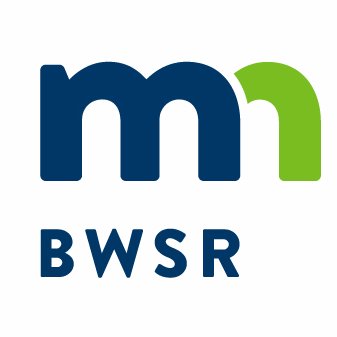Contact: Celi Haga
651-315-5082 (Cell)
St. Paul, Minn.— Restored shorelines, blooming raingardens, clearer lakes – throughout Minnesota these projects speak to the work being done to improve and protect our state’s natural resources thanks to the Clean Water, Land and Legacy Amendment. Today, the Minnesota Board of Water and Soil Resources (BWSR) announced another wave of Clean Water Fund grants, more than $11 million to help local governments put more projects in the ground that benefit Minnesota’s streams, rivers, lakes and groundwater.
BWSR Executive Director John Jaschke said these projects are helping the state make progress toward its water quality goals. “Using sound science and the expertise of local government conservation staff, these projects are prioritized and targeted to make the most effective use of Clean Water Fund dollars. This work, and the state, local and private landowner partnerships that support it, will continue to move Minnesota forward.”
The Clean Water Legacy funds are used to both protect at-risk waters and target polluted waters throughout the state. Gully stabilizations, basins that slow down water, and raingardens are just some of the practices used in this year’s projects. This round includes six Multipurpose Drainage Management grants, new to the program this year, which focus on water quality improvements in public drainage systems.
BWSR funded 64 applications totaling $11.7 million dollars this round, but interest in this program continues to outpace available funding. 133 applications were received, totaling $31.4 million in requests.
Some examples of funded projects:
- In northwest Minnesota, the Pennington Soil and Water Conservation District (SWCD) will install conservation practices along three county ditch systems to stabilize them and reduce erosion. The district estimates that these practices will keep 2,248 tons of sediment from entering the Red Lake River.
- In the center of the state, Benton SWCD will work with livestock producers to implement best management practices like vegetated filter strips, nutrient management, and feedlot pollution control to reduce runoff and improve water quality within the Mayhew and Big Elk Lake watersheds. The district estimates this will reduce phosphorus by 6,486 pounds a year and soil and sediment by 7,938 tons per year.
- In the Twin Cities Metro, the Comfort Lake-Forest Lake Watershed District will rehabilitate three wetlands within the Moody Lake watershed. This work will get the district 80% of the phosphorus reductions it needs to meet its water quality goal for the watershed.
- In southern Minnesota, Dodge SWCD will install nine saturated buffers in priority areas along the Mississippi River basin. Nitrogen is a serious problem in the area, and these practices will reduce levels by an estimated 1.35 metric tons a year.
See how the Legacy funds are affecting the land and waters important to you. For detailed project information and maps visit www.bwsr.state.mn.us.

